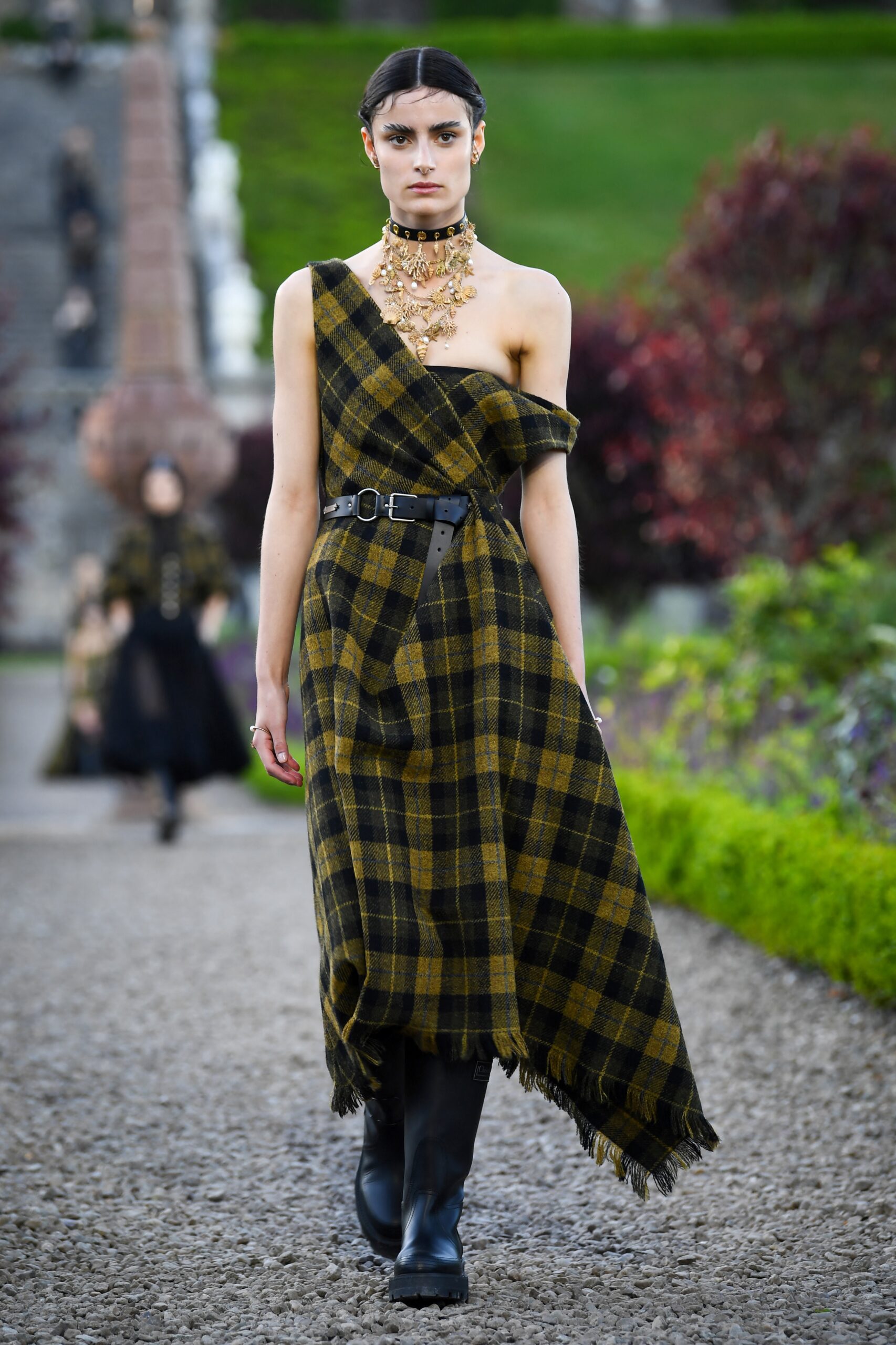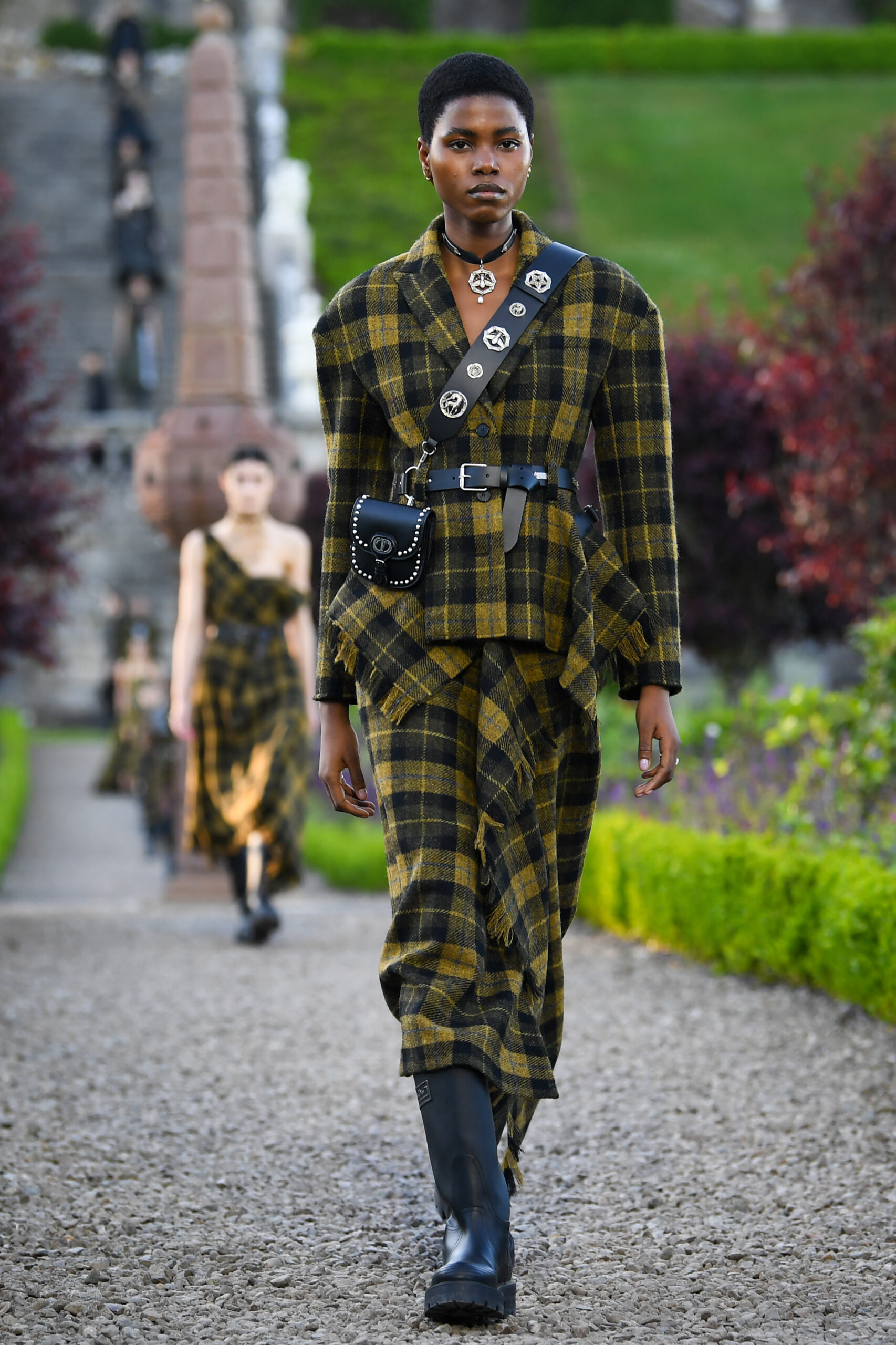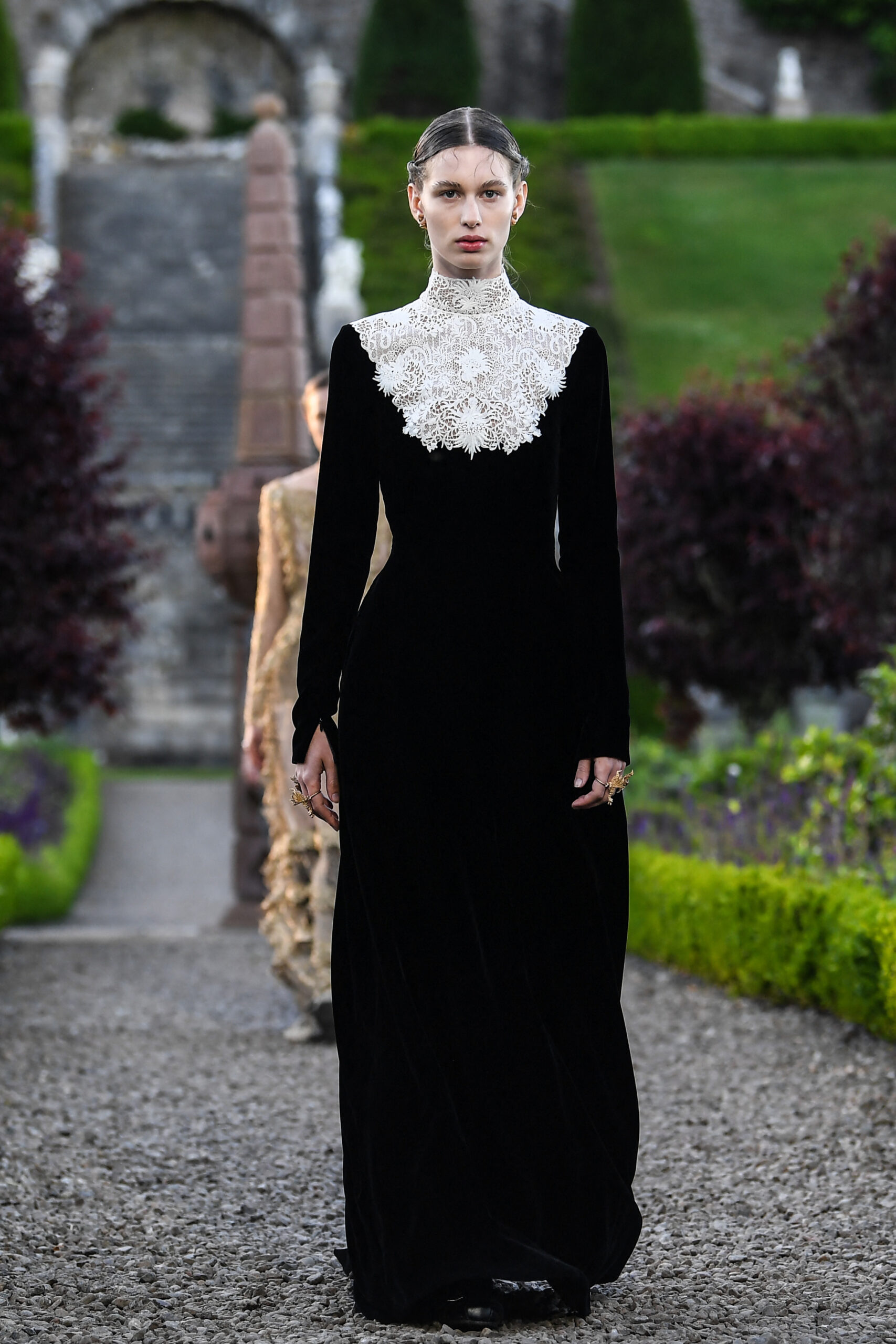
With each season, Maria Grazia Chiuri is drawn to notable women in history and the places they hail from. From Frida Kahlo, whose artistic activism inspired Dior’s Cruise 2024 show in Mexico City, to Marlene Dietrich, whose pioneering style had a noticeable influence on the Pre-Fall 2024 show in Brooklyn, Cruise 2025‘s focus now shifts to another formidable female figure in Mary, Queen of Scots.
Against the haunting backdrop of Drummond Castle in Perthshire, Scotland, to the wistful skirls of bagpipes, Chiuri presented a collection that not only reflected the defiant spirit of the late royal but captured the wild beauty of the country’s rugged landscape and paid homage to its traditional garb—thanks to a collaboration with Scottish designer Le Kilt.
In this context of inspiration, more obvious references like tartan and tweed could easily become schlocky, but with the house’s exhaustive craftsmanship and attention to detail, these textures are aptly highlighted like never before. Styled with embellished chokers, utilitarian belt bags and even Wellington-style boots, looks are rich with referential nods to the country’s storied—and, at times, bloody—history while elevated by the French artistry of the house.
Tudor-style details in silhouettes such as crinoline skirts, puffed tapered sleeves, contemporary ruffs, Lamellar-like bodices, and an abundance of pleats were also seamlessly served up next to studded denim, cut-out knits, fishnets and punky argyll.

For a brush-up on some history, Mary I of Scotland was raised in France but became queen just six days after her birth following her father’s death. She went on to rule Scotland during a tense religious and political climate until her forced abdication in 1567. Becoming a prisoner of her cousin Queen Elizabeth I of England, she was executed in 1587 after almost two decades in captivity.
Though her rule was fraught with upheaval and turmoil, her years in confinement emboldened her to speak her piece any way that she could. What proved to be a fruitful avenue of dissent was embroidery, a craft that has always been a key focus of Chiuri. As outlined by author Clare Hunter in a teaser for the show, Mary used needlework to “claim her own testimony,” conveying an array of symbolic messages through pieces that can still be found at Oxburgh Castle in Norfolk.
Not dissimilar to her partnership with artist Elena Bellantoni, who remixed old cuts of sexist advertising with corresponding slogans that critically correct the original messages during the Dior Spring/Summer 2024 show, Chiuri channelled her own Battlecry throughout statement pieces on the runway. Captured on bodices were words typically used to patronise women—”emotional”, “bossy”, and “moody”, to name a few—that the designer seems to seek to reclaim.




This article first appeared on GRAZIA International.
READ MORE
What Is The Future Of Fashion? These Two Fashion Insiders Are Trying To Answer That Question
Yayi Chen Zhou Is The Fashion Designer Giving New Meaning To East Meets West
How Haerin’s Dior Book Tote In Denim Oblique Got Its Vintage Appeal
